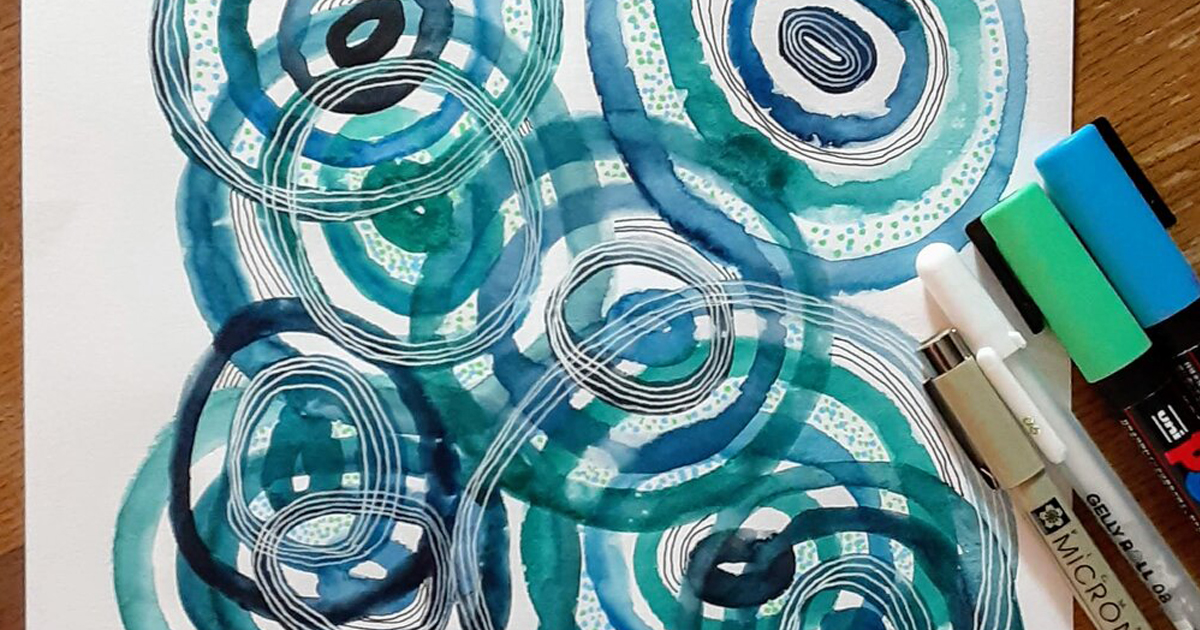
Art Therapist Megan Mitts Shares How Therapeutic Art Processes Help With Mental Health
Photo from Echo Recovery
Originally Posted On: https://echorecovery.org/blog/how-therapeutic-art-processes-help-with-mental-health/
Megan Mitts is an art therapist that focuses on transferring creative coping coping skills for people who may benefit from alternative support for their mental health and recovery. After receiving a Bachelors in Fine Arts from Miami University and wading through existential dread through her 20’s, Megan pursued a Master’s degree in Art Therapy from Saint Mary-of-the-Woods College. This education empowered her to start using art in a practical way of both working through and supporting her mental health and how to share this insight to support others.
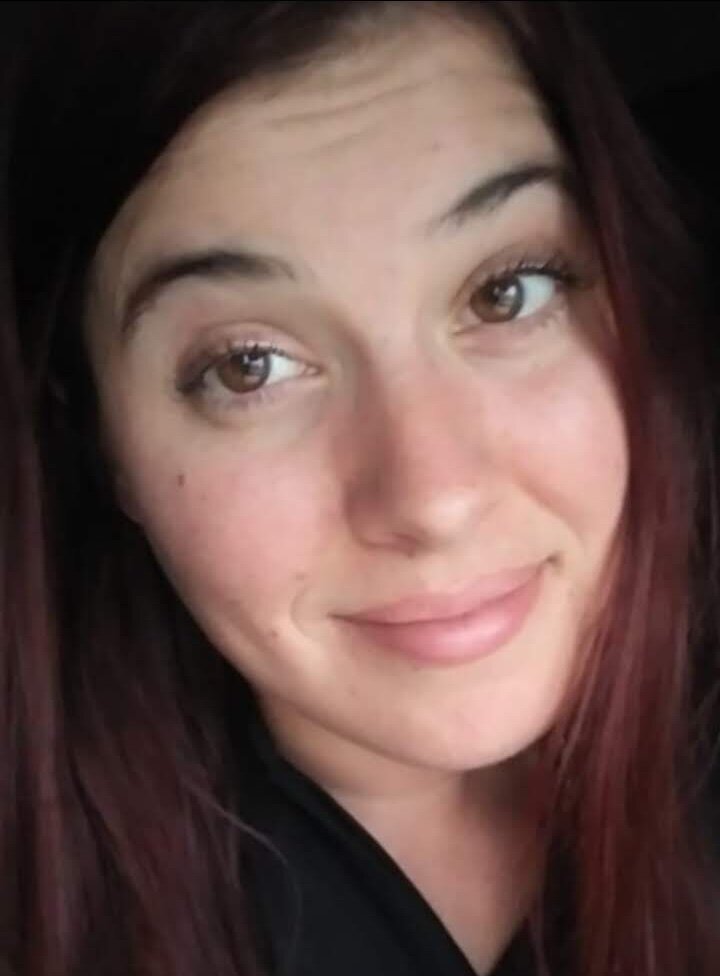
She started Art From Anxiety on social media as a way to be open about ongoing struggles with her mental health, as well as how she uses art to feel better in hopes it will empower and inspire others to get creative and feel better. Through her professional experience working with kids, adults and families with a wide range of emotional needs and in various stages of recovery, she started focusing primarily on developing programming around low-risk, high-reward therapeutic art activities to help others help themselves while giving them tangible reminders of their ability to work through daily stress or setbacks. Megan believes you don’t have to be an artist to create art from anxiety.
We asked Megan some questions to get a better feel for how she feels art can help anyone who wants to work on their mental health. Below are her answers and links to her resources. Be sure to check them out!
ECHO: Thanks for doing this interview with us Megan! Let’s get right to it! What made you want to become an Art Therapist?
Art was always a safe space for me growing up. As a child of divorce diagnosed with Anxiety and Depression in Middle School, art gave me space to both distance myself from overwhelm and better understand the world around me. I also struggled with communication, as far as how to put things into words so others both heard and understood me, while art provided validation without verbal communication. I love art therapy because we can skip over the natural limitations of verbal communication to quickly elicit connection and deeper understanding of ourselves and others using art making processes and imagery.
A lot of adults who identify as helpers are oftentimes providing the support they didn’t receive as a child; to be that person for others they wished they had. My goal is not only to provide support for the people who function, feel and see the world differently, but also for them to feel seen, heard and understood without having to put it into words, and be able to provide that for themselves time and time again.
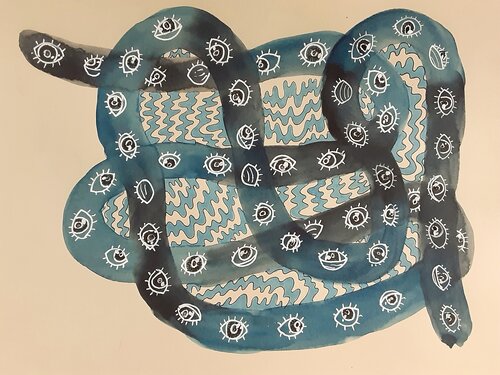
Art by Megan Mitts, Artist and Art Therapist
ECHO: How long have you been doing Art Therapy?
I graduated from Saint Mary-of-the-Woods College in 2016 and continued my internship opportunity post-grad, working with a residential facility for eating disorders. Since then I’ve worked with kids and adults who are on the spectrum and/or other emotional and intellectual limitations while continuing to work with eating disorder recovery. It was after years of trying to help people in what felt like a helpless system of health care resulting in a “revolving door” that seems acceptable to insurance providers that I shifted focus to accessible and affordable therapeutic art services in hopes of empowering the artist to cope better.
ECHO: How is art therapy different from art-as-therapy?
Art therapy is art processes presented by a graduate professional in a safe environment conducive to the needs of the client. An art therapist is able to navigate particularly sensitive subjects in consideration of trauma, cognitive abilities or physical modifications and can avoid potential triggers due to extensive training and experience using art materials and processes. Art therapists also focus on processing the creation of art and the product with the client in order to provide closure around exposure to sensitive subjects, so the client is less likely to carry over outside of the session. Someone offering art therapy has an art therapy graduate degree or art therapy certificate to support their masters level psychology degree.
Art-as-therapy, or therapeutic art, are things anyone can do without an art therapist. These are safe art processes for people and professionals to use on their own or in support of therapy. Therapeutic art is great for preventative care, coping and as a support for learning outcomes from ongoing therapy.
ECHO: Tell us more about your brand Art From Anxiety
Art From Anxiety is about normalizing and feeling empowered to work better with our mental health struggles. It started on social media as art products that helped me better understand and manage my anxiety and depression. It was scary using my personal experiences and emotions as a way to put my art therapy education into practice while emphasizing the importance of normalizing mental health struggles while promoting alternative coping, but it felt necessary if I wanted to incur change. When I presented these processes to others in various populations,
Art From Anxiety started as my own journey, but once I started noticing how highly adaptable, low-risk, high-reward and people felt better in spite of their initial doubts I wanted to share more. Now, Art From Anxiety specifically focuses on therapeutic art processes (those things that are safe to do without an art therapist) so that others can empower themselves to feel better with what’s available to them while using values needed for resilience including resourcefulness, acceptance, awareness, perspective, persistence and self-soothing.
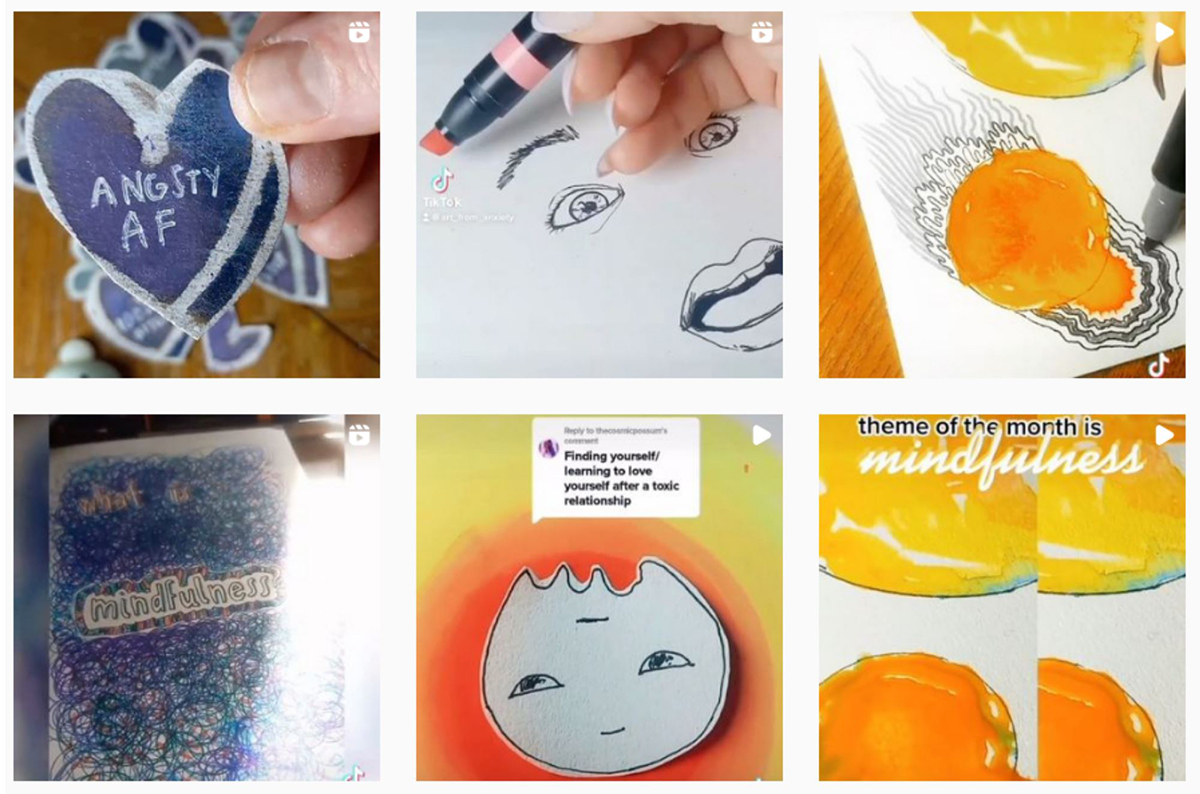
ECHO: When you heard about the ECHO Foundation and our mission to help artists in recovery, what made you want to get involved?
I believe that more support for reintegration into life outside of intensive treatment and accessible preventative care for maintenance of recovery could prevent recurring crises for individuals that struggle with mental health. I have been developing services in response to this need for the past 3 years, but ECHO Foundation is the first non-profit organization I’ve come across that truly wants to put all the pieces together in order to make that happen. The people who are a part of ECHO have a desire to support those who deserve a little more than what they currently are provided in this world. People in recovery are our teachers, nurses, care providers, friends, siblings, and neighbors who are trying their best to survive with what’s available to them. ECHO and I both want to help people move from just surviving to thriving through their recovery by offering more of what they deserve.
ECHO: In your experience, how does art help with mental health?
Art is just one of many creative modes for alternative coping. It’s much more than aesthetics and art skills, which can oftentimes deter the adult from engaging with the arts for fear they may not be “good enough.” To challenge that, I like to inform people of a pivotal developmental shift from being process oriented as kids to product oriented as teens into adulthood. This means we were more likely to engage in interests whether we were good at them or not because we enjoyed them and the outcome didn’t matter when we were young. As teens, we shift to limiting our efforts by only putting time into things that would provide external value such as income or likes. I share this to encourage people to realign with that child self that did things without judgment because it provided them internal value, and find solace in that aspect of ourselves to support the creation of self-care.
When we make art for art’s sake and give ourselves permission to enjoy the process, we can give ourselves a much needed break while challenging perfection, criticism and judgment; those things that we face all too often that inevitably devalue our ability to enjoy life as much as we could. Once we get over what’s holding us back from creating, we can help our mental health by feeling like a kid, as well as offering safe expression of our emotions so we have less carry over. Art can help us solidify our identity as well as validating our experiences while challenging isolation so we feel less alone. Art also provides the opportunity to shift from problem-focused to solution-focused through externalizing emotions, acceptance, awareness, persistence, perspective, resourcefulness and resolution and a slew of other values for resilience. When we practice and play around in art making, we are providing ourselves tangible reminders of our ability to cope that transfer into real life when facing daily stressors or setbacks.
ECHO: What do you think is lacking in traditional care?
Traditional care tends to focus on providing services when a person is in crisis and until they are deemed “well enough,” which is not determined by the person in recovery or the treatment team but rather by an insurance company’s interpretation of documented progress versus cost. This approach perpetuates the stigma around needing to be “helpless” in order to receive the help we deserve to navigate life. This furthermore perpetuates a fear of therapy and mental health practices so fewer people seek out help because they don’t want to seem helpless or they don’t deserve it because there are people who need help more than them.
If traditional care normalized accessible and alternative support for our mental health then that could prevent someone from falling into crisis or falling back into crisis, promote their ability to maintain and increase the potential to thrive. Considering traditional care’s current focus, it doesn’t seem like that’s what they want for us as a society, to be well and happy individuals.
ECHO: What else can we do to help?
Unfortunately, we can’t create lasting change for a better world with people who are barely surviving. To foster change, we need to first help ourselves.
Prioritizing oneself doesn’t have to be selfish. When we take the opportunity to make space for our emotions, needs and desires, we are supporting ourselves so we can maintain and possibly grow. When we commit to supporting ourselves as individuals, we have a greater ability to not only be a model for others but we also have more time and energy to better support our loved ones and our community.
ECHO: What’s next for Art From Anxiety?
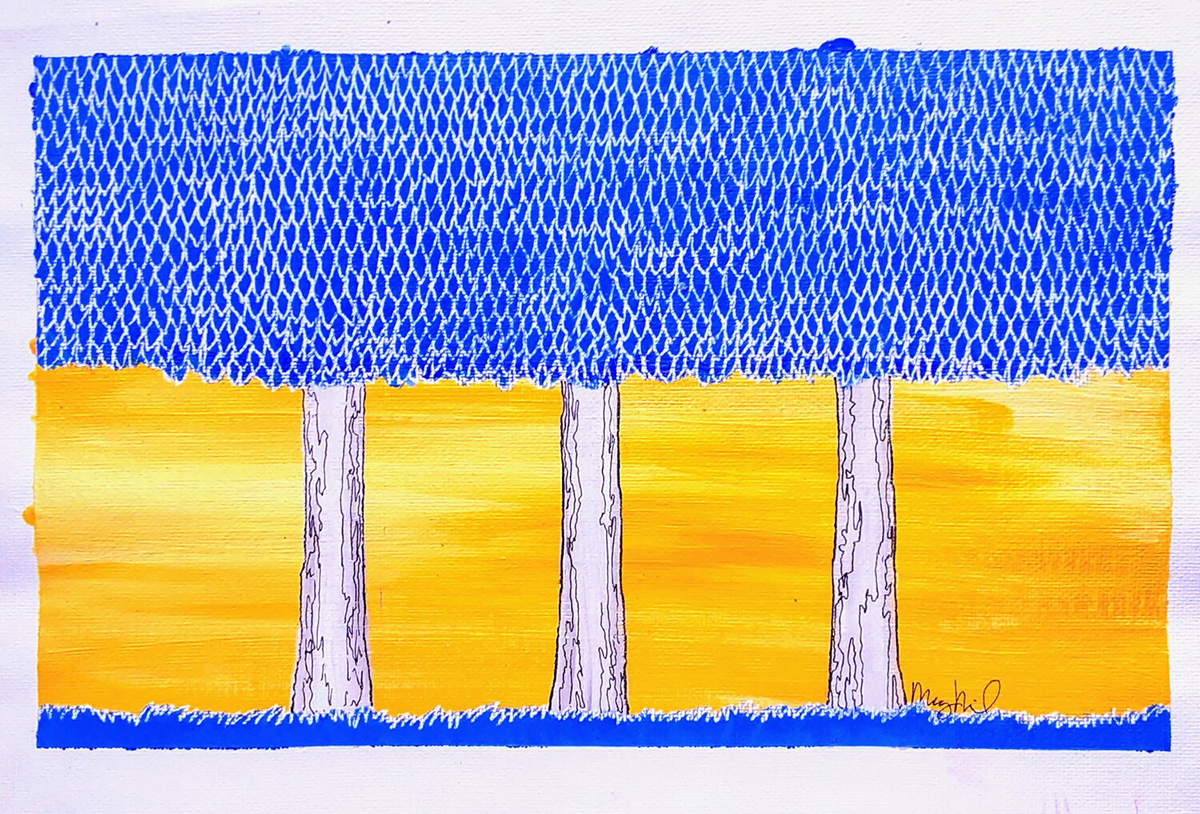
Art by Art Therapist, Megan Mitts
Art_From_Anxiety has a growing angsty artist community for free content and safe expression through TikTok. For those who would like to advance their creative coping skills, they can become a patron of Art_From_Anxiety to access more in-depth therapeutic art considerations and inspiration based on monthly themes such as mindfulness and gratitude. Art From Anxiety will continue to grow by aligning with like-minded organizations such as the ECHO Foundation, who prioritize the people in recovery by providing more accessible and alternative support.
ECHO: How can the ECHO Foundation partner with Art From Anxiety to bring more events and awareness of the arts to the community?
I want to invite others to create recovery-focused coloring pages to make available for the ECHO Foundation community. Creation of black and white drawings helps release tension while feeling more in control and promoting mindfulness. Scanning those images and making them available online for others to print off and color in offers a starting point that can be less overwhelming than a blank canvas. Coloring promotes mindfulness, while coloring other people’s imagery offers validation for the original artist and the colorer through different perspectives of a shared experience, all through one image. It’s a low-key way to foster a sense of connectedness while creating self-care and it is an exciting starting point for this budding relationship. I’m excited to see how else I can help others create art from anxiety while supporting ECHO’s mission to support those in recovery.
